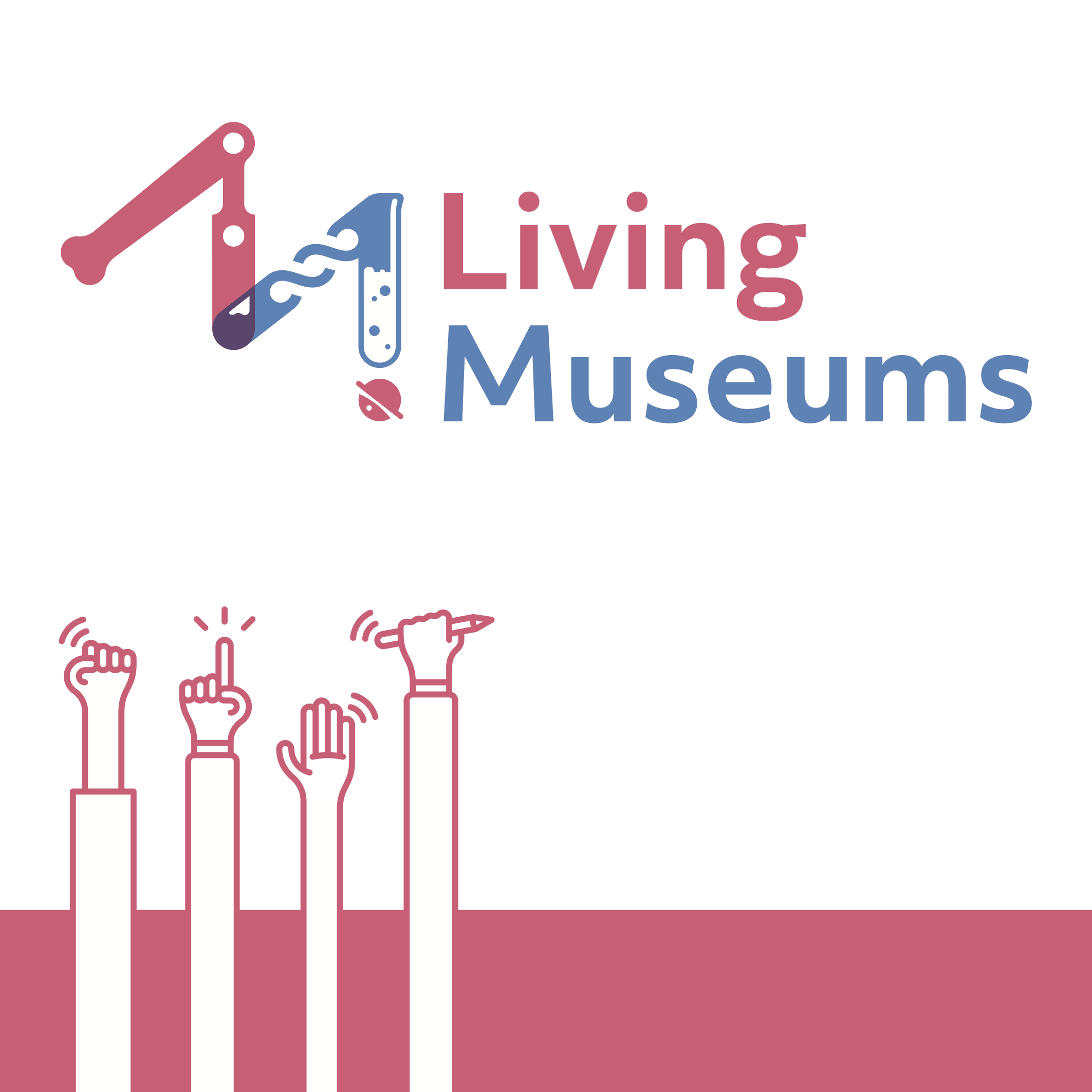"We want a space where conversation and reflection is actively encouraged"
30 September 2020
As part of our Living Museums project campaign, group members Bronwyn and Isaac explain how accessibility could be better supported in museums, to make them more welcoming places
Within our discussions for the Living Museums project, we identified many themes that are barriers to young people when engaging with museums.
One issue in particular we highlighted for young people is accessibility. We discussed how museums are especially difficult for those who have learning disabilities.
From my own experience as a young person with dyslexia and dyspraxia, museums are challenging in many regards. One area in which museums are especially difficult for myself and other young people with learning disabilities is when it comes to reading information and text. Large amounts of information and text are tricky and make me feel uncomfortable within museums.
The presentation of the text in large paragraphs, with no text breaks and difficult fonts (such as Times New Roman), make text hard to read. Additionally, the glare from the background of the paper or text, especially by black text on bright white backgrounds, can cause visual stress.
Ultimately, it leaves me and others unable to engage, and makes us feel detached from the museum.
Reading text in museums as a young person with learning disabilities can feel similar to the scene in the Percy Jackson and the Lighting Thief where Percy, who has dyslexia and ADHD, is unable to read the museum signs. The letters literally jumble up and become incomprehensible.
Of course, we are not all descended from Greek gods, but the scene gets across the overall point to the viewer that the text is difficult to read. The scene highlights the reality of how uncomfortable young people with learning disabilities can feel in museums.
Many young people who visit museums are at school, college and university where they are already doing a lot of reading for their courses and exams. Their learning disabilities require them to spend more time on their work than their peers, so when museums use large chunks of text, it can leave them exhausted and less interested.
Alternative options other than text are often reserved for younger children, such as colouring sheets, maps, dressing up and games, with little historical information. Taking these alternative options can feel degrading as a young person and emphasises the age gap problem in museums that misses out young people.
The lack of other resources such as video and audio within museums leaves young people with few other options to engage with the museum on the same level as others visiting. It is therefore hard to belong and feel comfortable as a young person with learning disabilities in a museum.
Additionally, the set-up of museum exhibits can be challenging for those who have learning disabilities as they are difficult to navigate, thus creating an intimidating space. To combat these issues, museums would benefit from having a space where conversation, debate and reflection is actively encouraged, disrupting the reverential church-like atmosphere of larger museums.
Bronwyn is a member of the Living Museums project group.
Is history user-friendly? Of, course.
You can spend years learning about it. Make a living from it. It can be fun with the right approach.
You know about museums. Those big, old buildings full of objects in glass cases, with stuffed animals and skeletons on plinths. Yes, the animals and skeletons are cool, but then you get to those plaques that tell you about them, and sometimes there's so much information that your eyes glaze over.
Do children and young people want to look at an animal they’ve never seen alive, then have to read through two paragraphs of dense text to know its story? When someone with ADHD or Dyslexia looks at Dolly the Sheep, should they have to try to read through a chunk of text? Wouldn’t it be better to present exhibits in a way that engages people of all ages and abilities?
Although the children's exhibits have puzzle games and interactive video presentations that tell you where different animals come from, this is pretty much the limit of hands-on education in museums.
This is where museums risk the stereotype of not being engaging or accessible. But by talking to young people and with a little reflection, they could adapt and improve so today becomes the interesting history of tomorrow.
Isaac is a member of the Living Museums project group.

Living Museums
Find out more about this project exploring how the museum sector can appeal to and engage young people
Click here for more

Participation & Engagement Guidelines
We developed guidelines for achieving meaningful participation with young people
Click to downloadMeet the Participation and Engagement team
Find out more about our team, areas of expertise, and how to get in touch
Click to find out moreConsultation Work with Children and Young People
Our participative approach ensures children's voices are at the heart of our work
Click to learn more